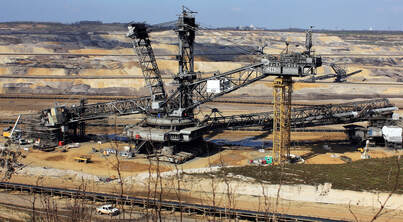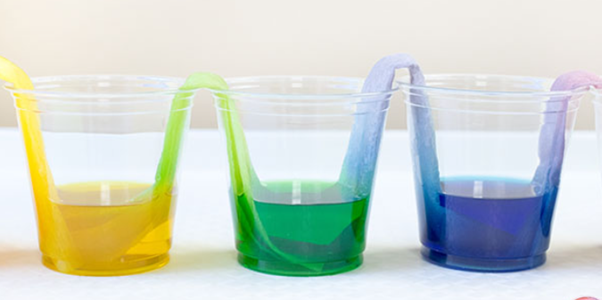MODULE 2703
So little carbon dioxide! Pffft?
Some people say .....
"How could such a low concentration of carbon dioxide possibly have any effect on Earth's energy balance". Nonsense!
But is it nonsense?
Let's consider this issue in general - not just in the particular case of carbon dioxide in our atmosphere.
What does Prof Bob have to say?
What does Prof Bob have to say?
A SUMMARY .......
The evidence against
Who would volunteer to drink a 0.04 % solution of strychnine?
What other substances at low concentrations have no effect on us?
And what about low concentrations of food dyes in water?
The substance in the yellow solution absorbs blue light, and the substance dissolved in the blue solution absorbs red and yellow radiation.
The verdict
So let's take it as established that if someone says, in any context, "How could such a low concentration have any effect? Nonsense!" then that person is indeed talking nonsense.
Relevance to carbon dioxide in the atmosphere and the greenhouse effect
The example of the different dyes in water is quite relevant to the story about greenhouse gases and climate change: different substances absorb radiations of different wavelength - and the amount they absorb can be significant even in very dilute solutions.
You might keep this in mind when you read about why carbon dioxide absorbs the radiations emitted from Earth, but not those incoming from the sun (Module 2708 Why doesn't carbon dioxide absorb the radiation from the sun?), and why carbon dioxide absorbs radiations emitted from the earth's surface, but nitrogen and oxygen do not (Module 2709 Why are N2 and O2 not greenhouse gases?).
You might keep this in mind when you read about why carbon dioxide absorbs the radiations emitted from Earth, but not those incoming from the sun (Module 2708 Why doesn't carbon dioxide absorb the radiation from the sun?), and why carbon dioxide absorbs radiations emitted from the earth's surface, but nitrogen and oxygen do not (Module 2709 Why are N2 and O2 not greenhouse gases?).
Now let's move on to the particular case of low concentrations of carbon dioxide in our atmosphere (Module 2704 Does carbon dioxide affect Earth's energy balance?).
Finding your way around .....
You can browse or search the Aha! Learning chemistry website in the following ways:
You can browse or search the Aha! Learning chemistry website in the following ways:
- Use the drop-down menus from the buttons at the top of each page to browse the modules chapter-by-chapter.
- Click to go to the TABLE OF CONTENTS (also from the NAVIGATION button) to see all available chapters and modules in numbered sequence.
- Click to go to the ALPHABETICAL INDEX. (also from the NAVIGATION button).
- Enter a word or phrase in the Search box at the top of each page.






